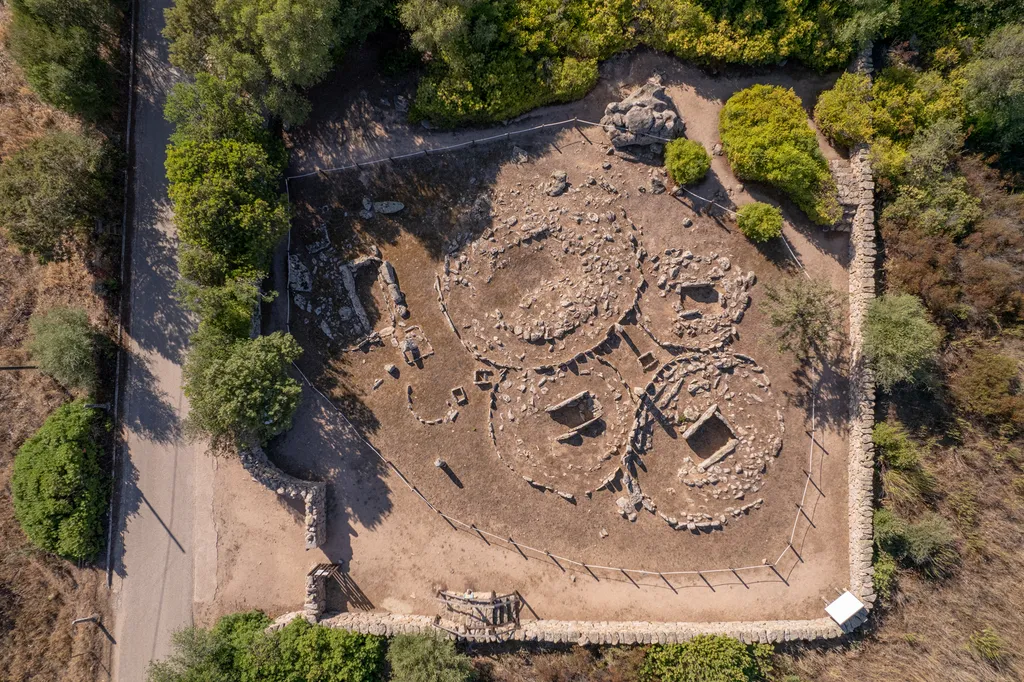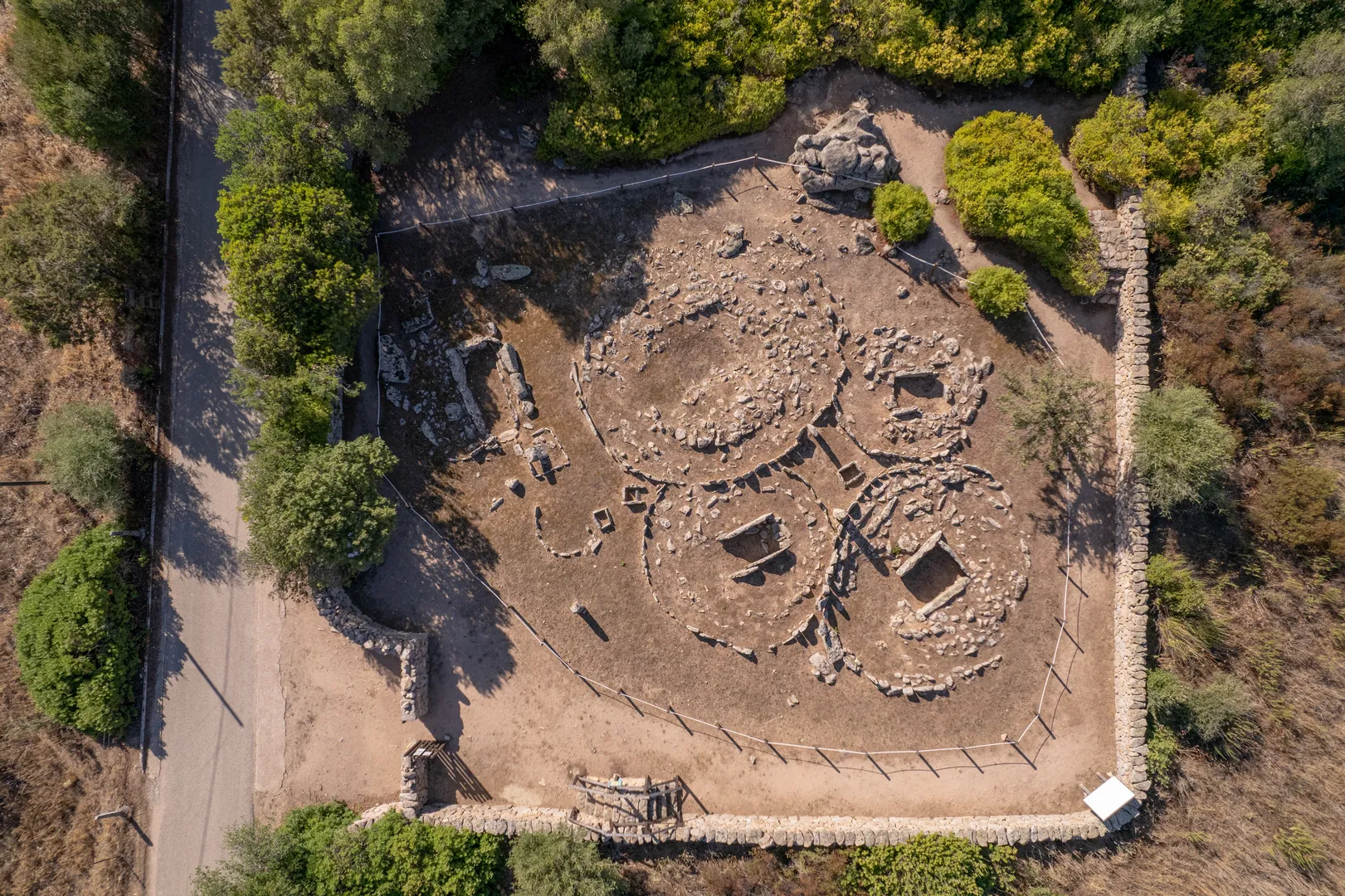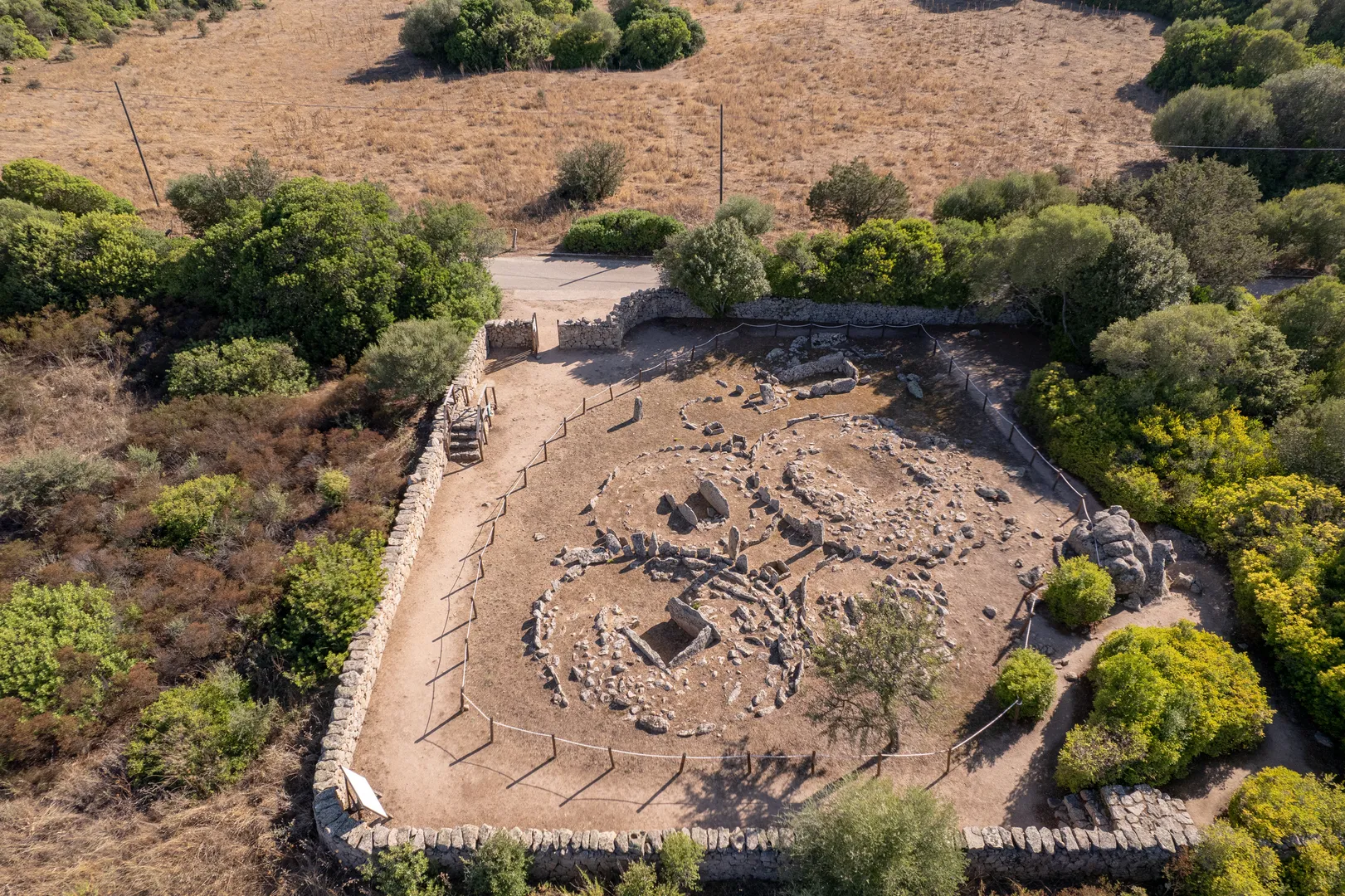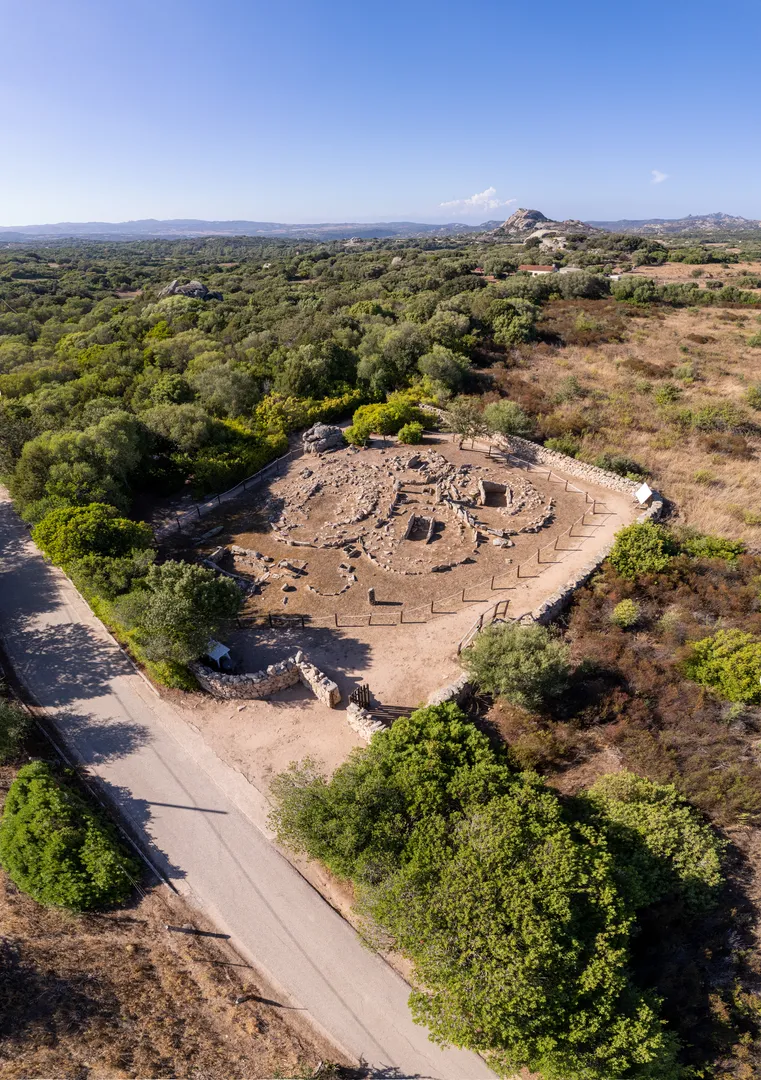Necropolis of Li Muri
A complex of megalithic funeral circles dating back to the 5th millennium BC, a unique feature in Sardinian archaeology.

Necropolis of Li Muri
Necropolis of Li Muri
Contact
Access information
From Arzachena, head towards Calangianus (SS427); after 4.8 km, turn right towards Luogosanto (SP14). After 4.5 km, a junction on the right leads into Strada Li Lolghi; after 1600 m, turn left onto via Pilastru and proceed for 900 m to the necropolis. Alternatively, from Arzachena, take SP115 towards Bassacutena for 4.8 km; turn left onto via Pilastru and continue for 900 m. Just before the entrance to the site, you will find the information point on the right.
The necropolis is located in the countryside of Arzachena and includes four funerary circles (called type A) and an allèe couvèrte (Tomb V).
The necropolis was discovered in 1939 by Michele Ruzittu who informed Superintendent of Antiquities Paolino Mingazzini of the existence of the site. In 1940, the excavation of the area began under the direction of Salvatore Maria Puglisi, who first published the results in 1941 and, after further joined investigations with Castaldi, republished them in 1964. In 1994, the excavation of Tomb V and the ritual enclosure included between the circles was completed (Antona 1999).
The four circles of the necropolis have recently been attributed to the San Ciriaco culture (Medium Neolithic). The site used to be regarded as dating back to the Late Neolithic and some scholars associated it to a specific Gallura facies referred to as “the Culture of Circles” or “the Arzachena culture”.
On the other side, as far as Tomb V is concerned, the period of time suggested by excavation works, suggest that it was last used in 1600 BCE ca., as evidenced by the discovery of an clay bowl dating back to the Middle Bronze Age.
The typical tomb consisting of grave circles bordering each other, includes a compound (1.50/1.90x1.10/1.50 m) made of granite stones emplaced in the ground, with a horizontal stone used as a cover. The whole structure was originally covered by a circular mound of rubble and dirt, supported by slabs and stones of different sizes arranged in concentric circles. A menhir was emplaced in the outermost circle. On the outside of each grave, a small quadrangular stone box was intended to collect offerings for the deceased. The four mounds, from 5.30 m to 8.50 m in diameter, were built during a long period of time, which ended up making the ritual space comprised between their points of tangency inaccessible. In this area there are two anionic menhirs in a facing position, and a stone donation box (about 0.45 x 0.35 m).
The allèe couvèrte (Tomb V) located a few meters SE from the other tombs, stands out for its unique structural features. Indeed, it is a flat rectangular chamber tomb (2.10x0.80 m), dug below the floor level (depth 0.60 cm), with the long facing sides consisting of three vertical slabs; a block completes the back side. Unlike more ancient structures, this tomb includes a mound with an open gap leading to the burial chamber, making it possible to enter the chamber multiple times. This feature implies the significant innovation of the multiple-body burial of the chamber tomb compared to the single-body burials or at most two-body burials, typical of the tombs used during the previous age, a fact that suggests a substantial cultural change.
Bibliography
- Antona Ruju A., Ferrarese Ceruti M.L. 1992, Il nuraghe Albucciu e i monumenti di Arzachena, Sardegna archeologica, Guide e itinerari 19.
- Antona A. 2023, La necropoli di Li Muri, Arzachena (SS), in G. Tanda, L. Doro, L. Usai, F. Buffoni (eds.), Arte e architettura nella Sardegna preistorica. Le domus de janas (candidatura unesco 2021), Cagliari: 140-143.



_plan.tggnxA9O_Z4ionv.webp)